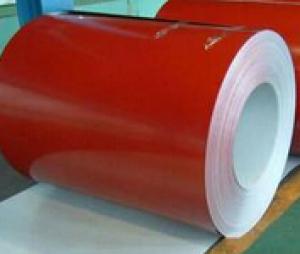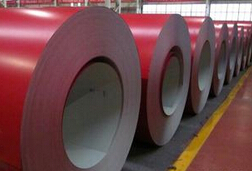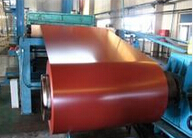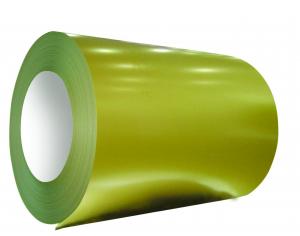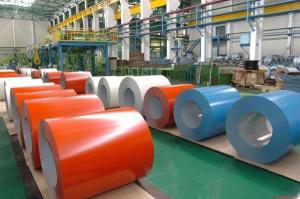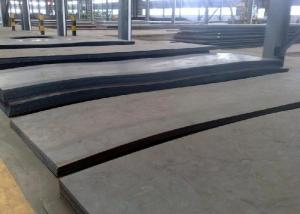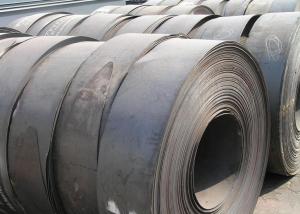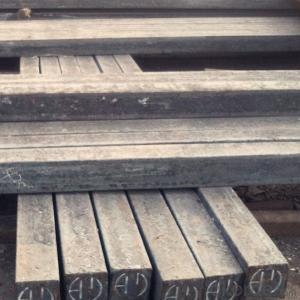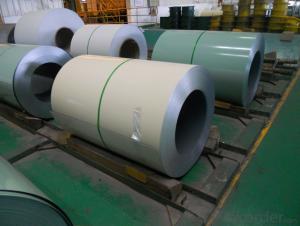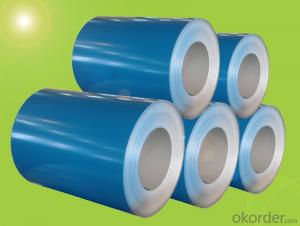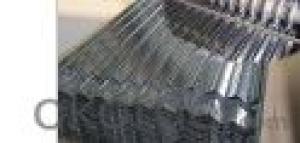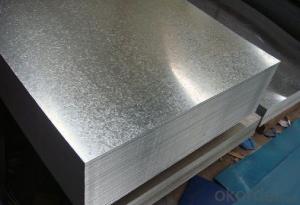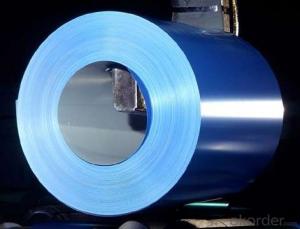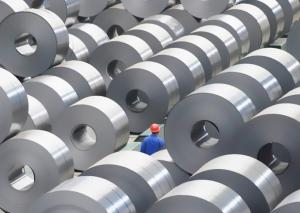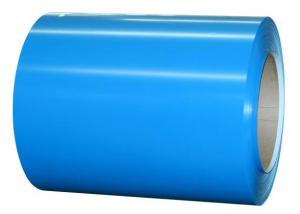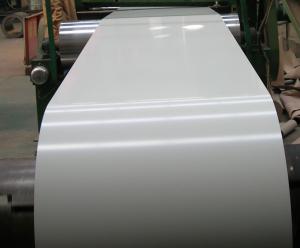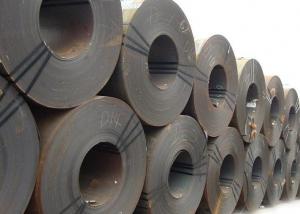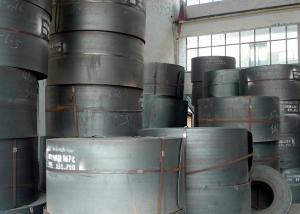High Durability PPGL Coil
- Loading Port:
- China Main Port
- Payment Terms:
- TT OR LC
- Min Order Qty:
- -
- Supply Capability:
- -
OKorder Service Pledge
OKorder Financial Service
You Might Also Like
Specification
1. Thickness: 0.3-0.8mm
2. Width: 914-1250mm
3. Inner Diameter: 508mm
4. Weight of Steel Coil: 3-15MT
5. Available Dipped Layer: 50-150g/m2
6. Surface Texture: Normal Coated
7. Type of coating structure: 2/1 Coat the top surface of the steel sheet twice, coat the bottom surface once, and bake the sheet twice.
8. Front side paint thickness: 15-25μm (bottome paint + top paint)
9. Back side paint thickness: 5-10μm
Mechanical Properties
1. Mechanical properties of base metals
Grade | Tensile Test | ||
Yield Strength MPa | Tensile Strength MPa | Elongation A80mm % ≥ | |
DC51D+AZ | 280-325 | 320-500 | 22 |
DC52D+AZ | 240-300 | 270-420 | 26 |
DC53D+AZ | 140-260 | 270-380 | 30 |
2. Common performance of front coating
(1). Thickness: ≥20μm
(2). Pencil Hardness: 2H
(3). 60° specular glossiness of coating: >60
(4). 180°bend: ≤3T
(5). Impact: ≥9J
(6). Salt Fog Resistant: ≥500h
(7). Color difference: <3ΔE
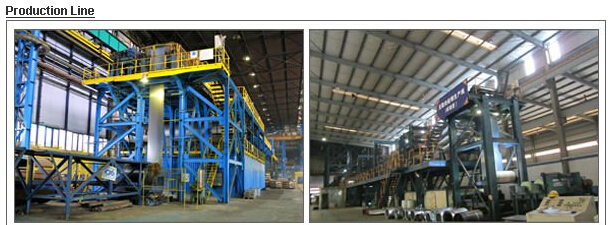
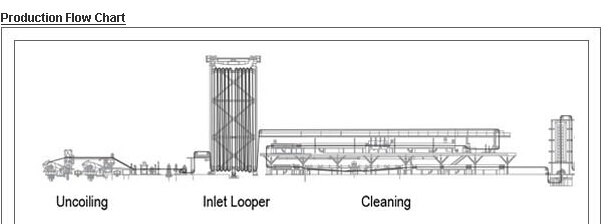
- Q: How do steel products contribute to the transportation industry?
- Steel products play a crucial role in the transportation industry as they are used extensively in the manufacturing of vehicles, infrastructure, and components. From cars, trucks, and trains to bridges, rails, and roads, steel provides strength, durability, and reliability. It helps in constructing lightweight yet sturdy frames, bodies, and chassis of vehicles, ensuring safety and efficiency. Additionally, steel is used in the production of bearings, gears, axles, and springs, enhancing the performance and functionality of various transportation systems. Overall, steel products contribute significantly to the transportation industry by providing the necessary strength, structural integrity, and reliability required for safe and efficient movement of people and goods.
- Q: What is the role of steel in the energy sector?
- Steel plays a crucial role in the energy sector as it is used in the construction of power plants, transmission towers, and pipelines. It provides strength and durability to these structures, ensuring their safety and longevity. Additionally, steel is utilized in the manufacturing of wind turbines, solar panels, and energy storage systems, enabling the production and distribution of renewable energy. Overall, steel is an essential material that supports the infrastructure and development of the energy sector.
- Q: How are steel plates used in the fabrication of pressure vessels?
- Steel plates are used in the fabrication of pressure vessels as they provide strength and durability required to withstand high pressure conditions. These plates are cut and shaped to form the shell and heads of the vessel, which are then welded together to create a sealed container capable of holding liquids or gases under pressure. The thickness and composition of the steel plates are carefully selected to meet the specific design requirements and safety standards of pressure vessel applications.
- Q: What are the different types of steel fasteners used in construction?
- There are several different types of steel fasteners commonly used in construction, including bolts, screws, nails, and rivets. These fasteners are essential for joining various components together, providing strength and stability to structures. Bolts are typically used for heavy-duty applications, while screws are versatile and can be used in multiple construction projects. Nails are commonly used for fastening wood materials, and rivets are frequently used to join metal components together. Each type of steel fastener has its own unique characteristics and uses, ensuring that construction projects are secure and durable.
- Q: How is steel used in the construction of power plants?
- Steel is extensively used in the construction of power plants for its exceptional strength, durability, and resistance to extreme temperatures. It is used in various applications such as structural frameworks, support beams, and columns, as well as in the fabrication of boilers, pressure vessels, and turbine components. Additionally, steel is crucial for the construction of transmission towers and electrical infrastructure within power plants. Overall, steel plays a vital role in ensuring the structural integrity and efficient functioning of power plants.
- Q: How is steel sheet metal formed into automotive body panels?
- Steel sheet metal is formed into automotive body panels through a process called stamping or pressing. In this process, the steel sheet is placed between two dies, one of which has the desired shape of the body panel. The top die is then pressed onto the sheet metal with high force, causing it to bend and take the shape of the die. This process is repeated multiple times, with different dies and angles, until the desired shape and structure of the body panel is achieved.
- Q: What are the factors to consider while selecting steel products for a specific application?
- When selecting steel products for a specific application, some factors to consider include the strength and durability required for the task, the corrosion resistance needed, the temperature and environment in which the steel will be used, as well as the cost and availability of the chosen steel product. Additionally, factors such as size, shape, and weight may also play a role in the selection process.
- Q: What are the advantages of using steel in the manufacturing of playground equipment?
- There are several advantages of using steel in the manufacturing of playground equipment. Firstly, steel is a highly durable material that can withstand heavy use and harsh weather conditions, making it ideal for outdoor play areas. Secondly, steel is resistant to corrosion, which ensures the longevity of the playground equipment and reduces maintenance costs. Additionally, steel is a versatile material that can be easily molded into various shapes and designs, allowing for the creation of innovative and engaging play structures. Lastly, steel is a safe option as it has high strength-to-weight ratio, providing stability and support for children while they play.
- Q: What are the advantages of using steel in automotive manufacturing?
- There are several advantages to using steel in automotive manufacturing. Firstly, steel is incredibly strong and durable, making it an ideal material for building the frame and structure of vehicles. This enhances the safety of the vehicle and provides better protection for passengers in the event of a collision. Additionally, steel is readily available and cost-effective, making it a cost-efficient choice for automakers. Furthermore, steel is highly recyclable, which aligns with the growing emphasis on sustainability and reducing the environmental impact of manufacturing processes. Overall, using steel in automotive manufacturing provides strength, safety, affordability, and sustainability benefits.
- Q: How is steel used in the production of renewable energy systems?
- Steel is used in the production of renewable energy systems in various ways. It is commonly used for the construction of wind turbine towers, providing the necessary strength and stability. Steel is also used in the manufacturing of solar panels, as it provides a durable framework that supports the solar cells. Additionally, steel is utilized in the production of hydroelectric power systems, such as dams and turbines, due to its ability to withstand the forces exerted by water. Overall, steel plays a crucial role in enabling the efficient and reliable generation of renewable energy.
Send your message to us
High Durability PPGL Coil
- Loading Port:
- China Main Port
- Payment Terms:
- TT OR LC
- Min Order Qty:
- -
- Supply Capability:
- -
OKorder Service Pledge
OKorder Financial Service
Similar products
Hot products
Hot Searches
Related keywords
